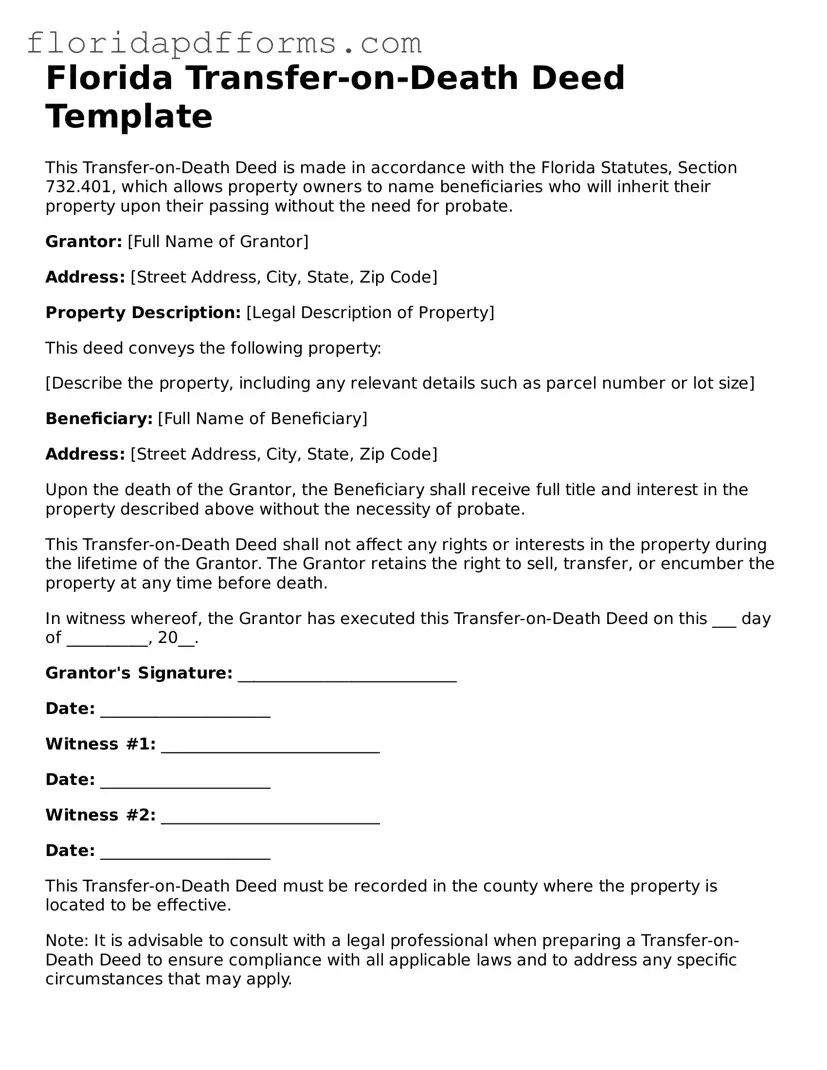Florida Transfer-on-Death Deed Template
This Transfer-on-Death Deed is made in accordance with the Florida Statutes, Section 732.401, which allows property owners to name beneficiaries who will inherit their property upon their passing without the need for probate.
Grantor: [Full Name of Grantor]
Address: [Street Address, City, State, Zip Code]
Property Description: [Legal Description of Property]
This deed conveys the following property:
[Describe the property, including any relevant details such as parcel number or lot size]
Beneficiary: [Full Name of Beneficiary]
Address: [Street Address, City, State, Zip Code]
Upon the death of the Grantor, the Beneficiary shall receive full title and interest in the property described above without the necessity of probate.
This Transfer-on-Death Deed shall not affect any rights or interests in the property during the lifetime of the Grantor. The Grantor retains the right to sell, transfer, or encumber the property at any time before death.
In witness whereof, the Grantor has executed this Transfer-on-Death Deed on this ___ day of __________, 20__.
Grantor's Signature: ___________________________
Date: _____________________
Witness #1: ___________________________
Date: _____________________
Witness #2: ___________________________
Date: _____________________
This Transfer-on-Death Deed must be recorded in the county where the property is located to be effective.
Note: It is advisable to consult with a legal professional when preparing a Transfer-on-Death Deed to ensure compliance with all applicable laws and to address any specific circumstances that may apply.
